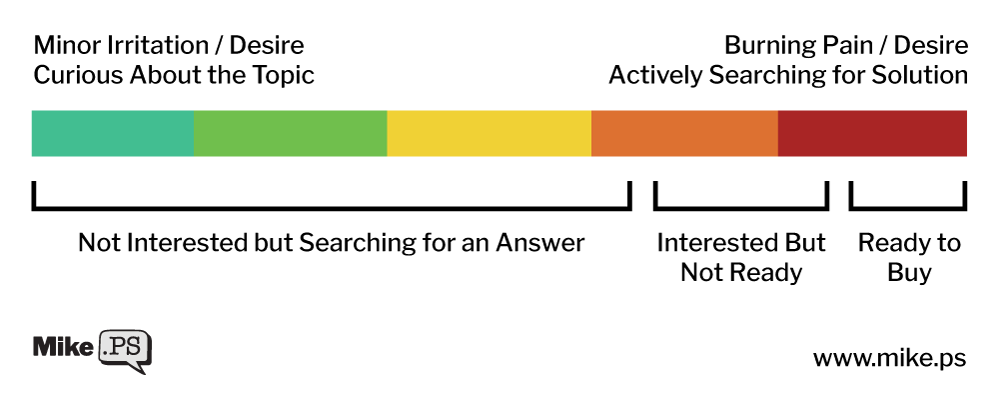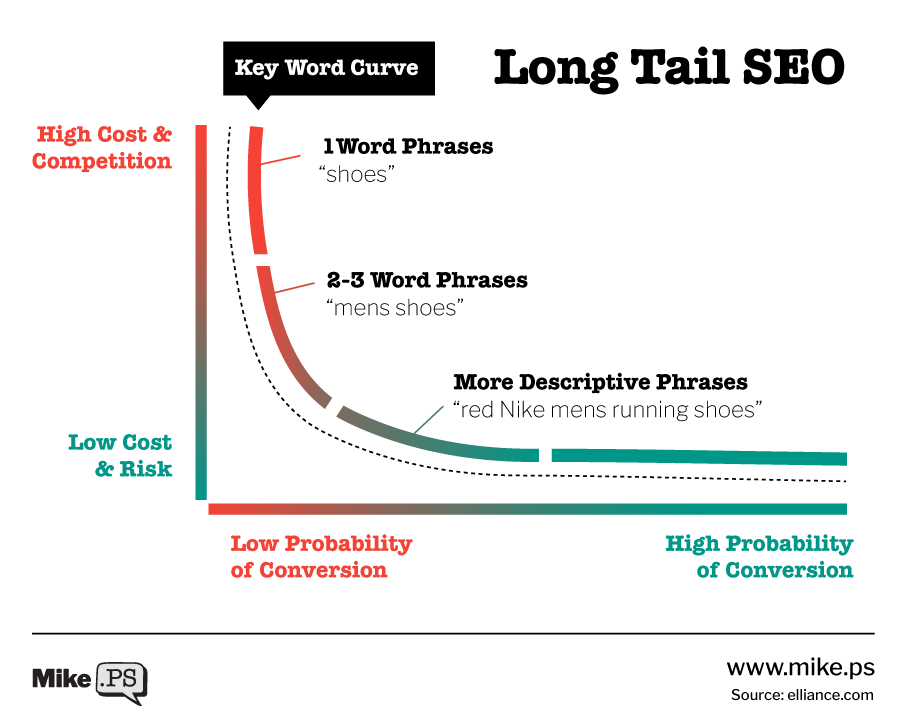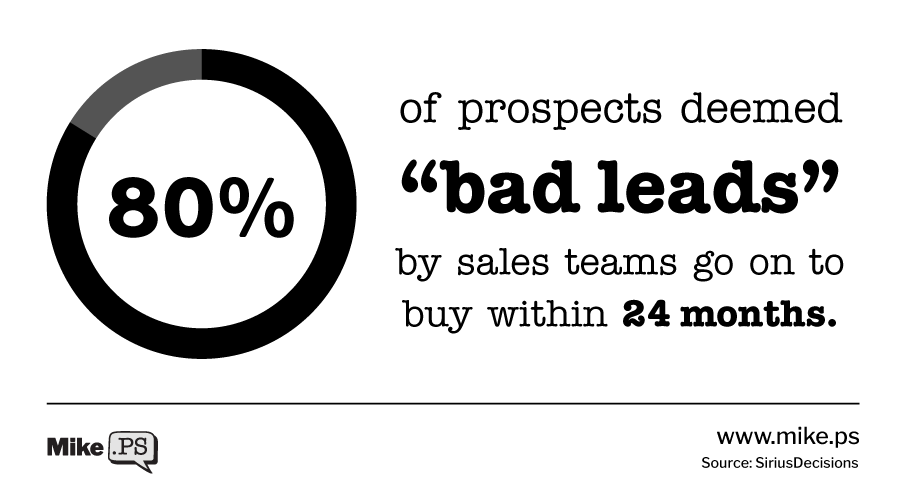When it comes to conversion rate optimization, there is no shortage of articles offering tips and tricks like bigger buttons, good calls to action, conveying benefits over features, using testimonials, etc. These are all important but they ignore the underlying framework that must be considered first.
I am going to show you how to increase your conversion and traffic on a large scale by showing you how to map your website to the buyer's cycle.
I've used this exact technique to drive millions of dollars in revenue from very few pages and pieces of content.
There's quite a bit here, so if you just want the cheat sheet emailed to you to reference later, I created an easy checklist called ”7 Steps to a High Converting Marketing Funnel” that you may find useful.
Conversion happens when you sufficiently demonstrate to an individual that you have the answer to their problem and/or question.

Now if that sounds a little basic, stick with me here.
You must understand that every visitor to your website is there because they are looking for the answer or solution to an underlying problem/desire.
But the key is that our problems/desires vary widely in intensity and maturity. As a result, our readiness for a solution varies widely and falls on a broad spectrum.

Some of us are just realizing that we have a problem and it is barely beginning to agitate. Others have developed a keen awareness of the pain and are actively searching for the solution.
The Problem that Holds Your Conversion Rates Back
The problem that hold’s most companies' conversion rates back, is that they are only targeting the small subset of their traffic that is keenly aware of the pain and actively searching for the solution.
If all you are doing to increase conversion is optimizing the steps that lead directly to a sale or signup, you are most likely missing out on the majority of your visitors who are not yet aware of the need for your solution.
At any given point, your website is getting traffic from 3 segments that you really should care about.
- 0-18% are ready to buy. They are there on your site evaluating vendors.
- 11-29% are interested but not quite ready to buy yet. They are evaluating buying criteria.
- 79-89% are not looking to buy anything at all. They are there just searching for an answer to a question or problem.

If you want to maximize conversion you must target each segment.
Ready to Buy Segment
The advice that you get from most sources will help you with the first segment (ready to buy). Good copy, clear calls to action, driving home your benefits, etc. will help a lot here. It is also important to understand your buyer personas with extreme clarity.
Interested But Not Ready To Buy
This segment is still evaluating buying criteria, not actual solutions. They don’t know what they need yet.
Remember what we said above? "Conversion happens when you can sufficiently demonstrate to an individual that you have the answer to their problem and/or question.”
This segment is trying to figure out what their buying criteria should be. So educate them on that. Provide a free opt-in that helps them to evaluate the solutions out there in the market. Create a checklist that they can use to evaluate their needs and potential choices. The beautiful thing about doing this is that it slants the criteria in your favor, but more importantly, you are helping them with their current needs.
Not Interested but Searching for Education
This is almost always the segment with the most untapped opportunity. You will find a lot of success providing guides and content that educates your visitors. Use your blog, organic search and social media platforms to catch prospects at this stage of interest.
Long-Tail Content
You will get the highest conversion rates when you are providing very specific answers to very specific questions. Read up on long-tail content and long-tail SEO because that is exactly what you are doing here. Write high-quality, high-value articles that answer real and pressing questions that your potential customers have.

Long-tail searches account for the large majority of online searches and have a vastly higher conversion rate. Even though it may seem attractive to go for the broader searches with higher traffic volume, your ROI on specific long-tail content with smaller search volume will be much higher. Once you build up your long-tail content, you will also end up owning a very valuable asset that gets high conversions and a lot of traffic.
Unique, Article-Specific Opt-ins
With each article you write, provide a related opt-in incentive to onboard them into your funnel. This can be a sort of upgrade to the content you wrote. Add a bonus checklist, a PDF version of the article with extra content, templates, extra examples, or really anything. Yes, this takes more time, but your conversions can be 10x higher than the general site-wide opt-ins. It is worth the time and effort.
It is also important to remember that this segment's awareness of their need for your solution is likely to be low at this point. Many companies just label them "bad leads" as a result.
But most of the time they aren't "bad leads", they just need a little love! A really good and sufficiently long marketing funnel must be in place to nurture them.

Most leads take approximately 12-24 months to buy. You will want to have an email sequence that nurtures them for the entire duration of this cycle, with intermittent calls to action that invite them to meet for a sales presentation, or whatever you have in place to turn leads into opportunities.
Other Ways to Increase Conversion
Once you are properly targeting all 3 segments of traffic that visits your site, here are a few other ideas that will help you to optimize your conversion rates:
- Start with high-impact sections of your site. Don’t just start testing everything. Identify the areas that directly impact your desired conversions, like the order form, and your call to action.
- Headline. Use one that conveys the unique benefits and identifies your target customer.
- Call to action. Make sure it passes the 10’ rule (you can clearly see the call to action from 10’ away from your monitor. Make sure it conveys the desired benefit.
- Popups. You don’t have to like them but if they are extremely targeted, they can be effective. Try using one that pops up after a certain duration on the site (like 30 seconds) or that pops up when the user is about to leave the site.
- Create a sense of urgency. Notice how sites like Groupon have timers, hotel sites show limited rooms left at the current price, and Amazon gives a countdown to when the product will still ship that day.
- Use social proof. One of the biggest advantages you can give yourself is proof. Show proof any way that you can. Before and after pictures, testimonials, videos, etc. Test the positioning of testimonials on the page.
- Increase the clarity of your offering and website. Use a survey tool like Qualaroo or a chat window. Notice where you lose people on your website. Find out why. Increase clarity in those sections.
I created a simple-to-follow cheat sheet guide called "7 Steps to a High Converting Marketing Funnel" that you may find useful.

